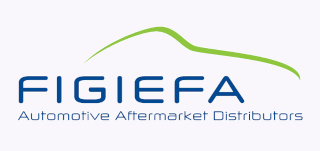Study - Trends in Telematics (2022)

We are entering the era of the Software Defined Vehicle. This has introduced new players into the automotive market. This includes technology providers such as Google, Apple or Nvidia, but also new Vehicle Manufacturers like Tesla, Rivian or an increasing number of Chinese manufacturers, with a ground up, ‘digital first’ approach.
New highly standardised in-vehicle platforms, such as Android Automotive from Google, are being increasingly integrated in vehicles and will rapidly reach massive deployment. In some cases OEMs choose to license a full Google solution, including its AppStore and services (Maps, Voice Assistant etc.), while some OEMs opt for an open-source version of Android Automotive and choose 3rd party technology providers to provide the supporting services. In both scenarios these “on-board ecosystems” are highly standardized, reliable, real time enabled and strictly governed by Google. That is also the case for solutions provided by Apple (CarPlay).
By contrast, If we look at what OEMs in Europe are offering today for access to data and functions, the degree of standardisation is extremely low, in terms of the extent/ scope of data and functions being made available, the quality of that data and also the unharmonized formatting of data & functions. This is also true of the pricing and business models proposed. This makes it very difficult for service providers who wish to develop multi-brand services. It also hampers the ability of any company operating as a Neutral Server or Marketplace to build a highly standardized digital ecosystem with a reliable price model and business case
on top of such a fragmented offering.
However, there are industry initiatives, such as Covesa or Sensoris, which strive to enable stricter standardisation. Widespread adoption of such standards would facilitate the development of data driven services and innovation and benefit European industry. Unless European legislation mandates the use of such standards, under the normal rules of digital markets, the scale of the biggest technology players will result in them creating de facto standards, driven by their wide scale deployments. This would give these technology players an inherent advantage, to the detriment of European industry and result in European standards being defined in Silicon Valley or China rather than in Europe and based on European regulatory or market needs.
In conclusion, the technical elements required for enabling data driven innovation in the automotive market are coming into place. However, current access methods proposed by OEMs to service providers do not meet the needs of industry. A lack of standardisation, incompatible pricing and business models combined with severe limitations on the extent of quality of data being made available are significant impediments to the development of digital ecosystems. In-vehicle application platforms, offering secure and standardised access to vehicle data, functions and resources can transform the data access paradigm.
To simplify it, in digital markets, with their brutal economy of scale, the biggest players that are able to promote the strictest standards will win. Thus, based on current trends, without regulatory intervention, the rules of the economy of scale will predict a likely win for the Silicon Valley giants and their Asian counterparts, over the fragmented efforts of individual European OEMs.
The outlook for the European automotive industry depends therefore, to a large extent, on the measures taken by the European regulator. Should the EC intervene and promote stricter standardization for authority as well for commercial use cases, the cumulative size of the European Automotive players from OEM as well as IAM side will at least give European industry a fair chance to compete against Silicon Valley and competitors from Asia and to derive full benefit from the digital transition and the opportunities of connected and automated mobility.
DOWNLOAD THE STUDY HERE:
